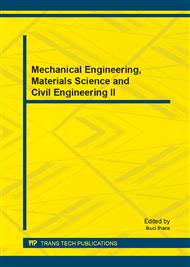p.205
p.211
p.216
p.220
p.226
p.232
p.236
p.240
p.244
Research on the Semi-Physical Simulation Technology of High Pressure Common Rail Electronic Control System for Low-Speed Marine Diesel Engine
Abstract:
In this paper, the semi-physical simulation technology is introduced with the design and implementation of a semi-physical simulation test bench. A certain low-speed marine diesel engine of high pressure common rail (HPCR) electronic control system is taken as the subject of the test bench. In order to retain the functional and structural features of the HPCR electronic control system, the essential components are in consistent with the target engine, and some auxiliary parts are simplified and reformed. Specially, a real-time simulation model is built based on the principles of Mean Value Engine Model and cylinder moving method, which captures the requirements of ECU, such as the crank angle, the exhaust valve stroke signal, the scavenging pressure and so on. Therefore a closed-loop control system is accomplished including a real-time controller deployed in the simulation model, ECU and the executing agency of HPCR system. Additionally a monitoring management system is developed for the test bench with the functions of acquiring signals, monitoring parameters, storing data, alarming and etc. Finally, some tests are finished in the test bench and through analyzing the experimental results, the test bench can perform the characteristics and functions of the HPCR electronic control system. The semi-physical simulation technology can be used for the functional verification and performance test of HPCR electronic control system for the low-speed marine diesel engine.
Info:
Periodical:
Pages:
226-231
Citation:
Online since:
December 2013
Authors:
Price:
Сopyright:
© 2014 Trans Tech Publications Ltd. All Rights Reserved
Share:
Citation:


